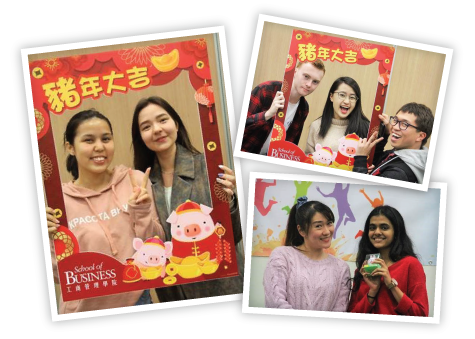Making Internationalisation Second Nature
By Tiffany Ko
“Making the internationalisation of teaching and learning something special that requires additional efforts may work less well than making it second nature for our students” Dr. Lucia Fung said.
If you, dear CoP – ITL Buzz readers, remember how we compared ourselves to bees which help pollinate a single plant to vegetation that sustains its own organic cycle, you will find much resonance in the above quote. On our way to make internationalisation an embedded character of universities in Hong Kong, we are glad that Dr. Fung, a HKBU-affiliated member, has been actualising our vision both as a teacher and the Associate Director of the Bachelor of Business Administration programme. This article captures her inputs to create a holistic learning experience for students of all backgrounds through internationalisation of the curriculum.
Enabling Authentic Cross-Cultural Comparisons
Making students aware of how global happenings interact with local situations is one of the keys to internationalisation. While a handy way to do so is to support theory teaching with case examples drawn from local and international news, Dr. Fung offered her students a “glocal” interaction beyond textbook and paper level by utilising classroom diversity. Lecturing in the School of Business, which houses the majority of international students on campus, the teacher was aware of the genuine need to turn the experience of diverse individuals into learning resources.
In the “Business Ethics and Corporate Social Responsibility” course, Dr. Fung actively invited her students to share the waste disposal practices in their home countries. In line with the sharing, students were assigned to work in groups to discuss if these world-wide practices could be transferred to Hong Kong. By engaging international students as learning inputs and assembling the class to reflect on local situations, Dr. Fung enabled all students to take ownership of authentic cross-cultural comparisons.
To make meaningful cross-cultural comparisons go beyond classroom discussions, Dr. Fung encouraged students to conduct comparative studies for their honours projects. Furthermore, she motivated students to collect first-hand data from overseas countries during their exchanges or internships. Instead of seeing distant supervision as a drawback, Dr. Fung considered spending a thesis-writing year abroad a value-added learning experience that helped better prepare students for real-life challenges.
Accommodating Inclusive Learning Environment
According to Dr. Fung, intercultural learning outcomes of a diverse classroom could be attained most effectively when students of different characters and orientations were allowed to shine as themselves. And so, she tried to leverage student diversity by engaging them in using e-tools. She noted that simple online polling or instant text responses served as good ice-breakers for in-class discussions.
The teacher also emphasised how a light-hearted and non-judgmental classroom setting facilitated intercultural learning. In the “Organisational Behaviour” course, she recalled how a mixed group filled the classroom with joy by challenging the norm of a formal presentation. The students put on funny outfits one by one to visualise the core idea of their presentation — a cozy workplace culture motivated employees better than money. With this case in mind, couldn’t we say a less formal, gamified learning atmosphere support student integration and innovation better than anything else?
Bridging Learning inside and outside Classroom
Last but not least, Dr. Fung shared how the School of Business extended the development of intercultural competences from the formal to informal curriculum. The Student Ambassador Scheme is a case in point. It recruits full-time undergraduates of mixed backgrounds to help organise public events for HKBU. The Scheme seeks to address one issue that is often identified in local institutions. In particular, non-Cantonese speaking students were given fewer opportunities to engage in academic committee. Through organisation of university-level events, students from various backgrounds are empowered to take on intercultural exchange and make positive impact on campus.
The teacher accentuated that “we cannot deliver internationalisation in a piece-meal manner”. We hope the good practices of Dr. Fung offer some inspiring thoughts on the road to substantial internationalisation of teaching and learning.
Acknowledgments
The feature story draws on an interview with Dr. Lucia Fung who generously shared with us her experiences and insights, and we hope we have done justice to the wisdom of her practice in the internationalisation of teaching and learning.
Cite this item
Ko, T. (2019, January). Making Internationalisation Second Nature. CoP – ITL Buzz, 5. Retrieved from https://www.cetl.hku.hk/cop-itl/whats-happening/enewsletters/issue-05/making-internationalisation-second-nature/.



